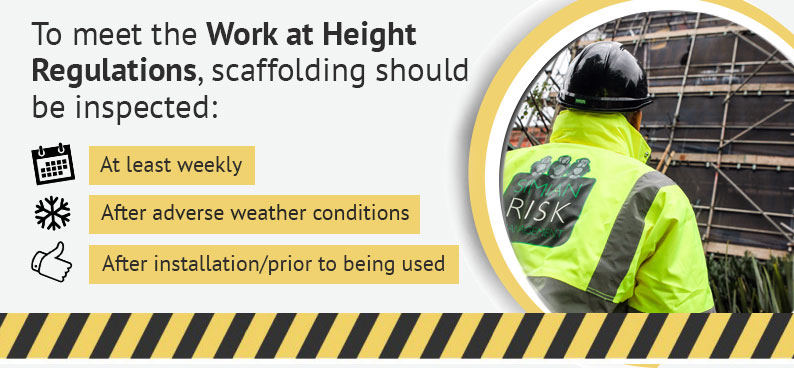Scaffolding Inspection Legal Requirements
18th August 2016

Scaffolding should always be inspected by a competent and appropriately trained individual and in order to meet legal requirements scaffolding must be inspected at regular intervals.
When and by whom do scaffold inspections need to be carried out?
To meet the requirements of the Work at Height Regulations 2005 scaffolding should be inspected:
• After installation /prior to being used
• At least weekly thereafter
• Following any circumstances which could jeopardise the safety of the installation such as adverse weather conditions. So even if a scaffolding structure was inspected just the day before it should be inspected again if for example there were high winds overnight or reports of event such as an earthquake in the region
It is the responsibility of the hirer/ user to ensure that scaffolding has been inspected in line with the regulations.
So who should carry out the inspection? HSE guidance stipulates that scaffolding inspections should be carried out “by a competent person whose combination of knowledge, training and experience is appropriate for the type and complexity of the scaffold.” The default competence is widely held to be a Construction Industry Scaffolders Record Scheme qualification.
A non-scaffolder who has attended a CISRS scaffold inspection course could be deemed competent to inspect a basic scaffold structure, whereas a more complex structure should be inspected by a CISRS Advanced Scaffold Inspection card holder. Scaffolders holding the appropriate level of CISRS qualification are also permitted to inspect scaffolding.
A written report should be completed for each inspection and retained on site until work is completed. Once construction work is complete, reports should then be kept at an office location for a further three months.
The following information should be included in every scaffolding inspection report:
• Name and address of the person for whom the inspection was carried out and the name and position of the person carrying out the inspection
• The location and the date and time
• A description of the place of work or where the work equipment was inspected
• Details of defects or anything identified during the inspection that could pose a risk to the health or safety of any person and any action taken to remedy this
• Details of any further action considered necessary
If you need help or advice regarding scaffolding inspections Simian can help. We can carry out independent scaffolding inspections, monitoring of scaffold activity and audits. We also offer a range of scaffolding inspection training courses for inspectors at different levels.